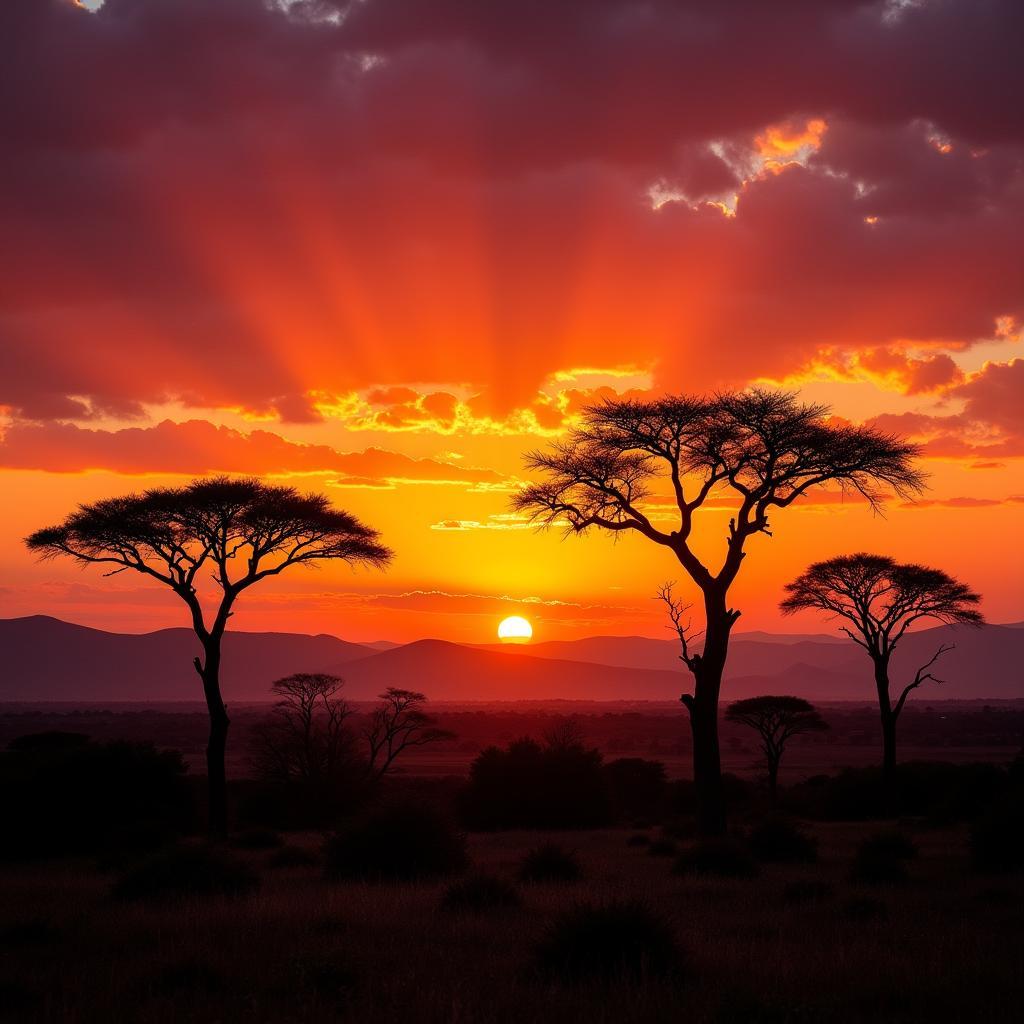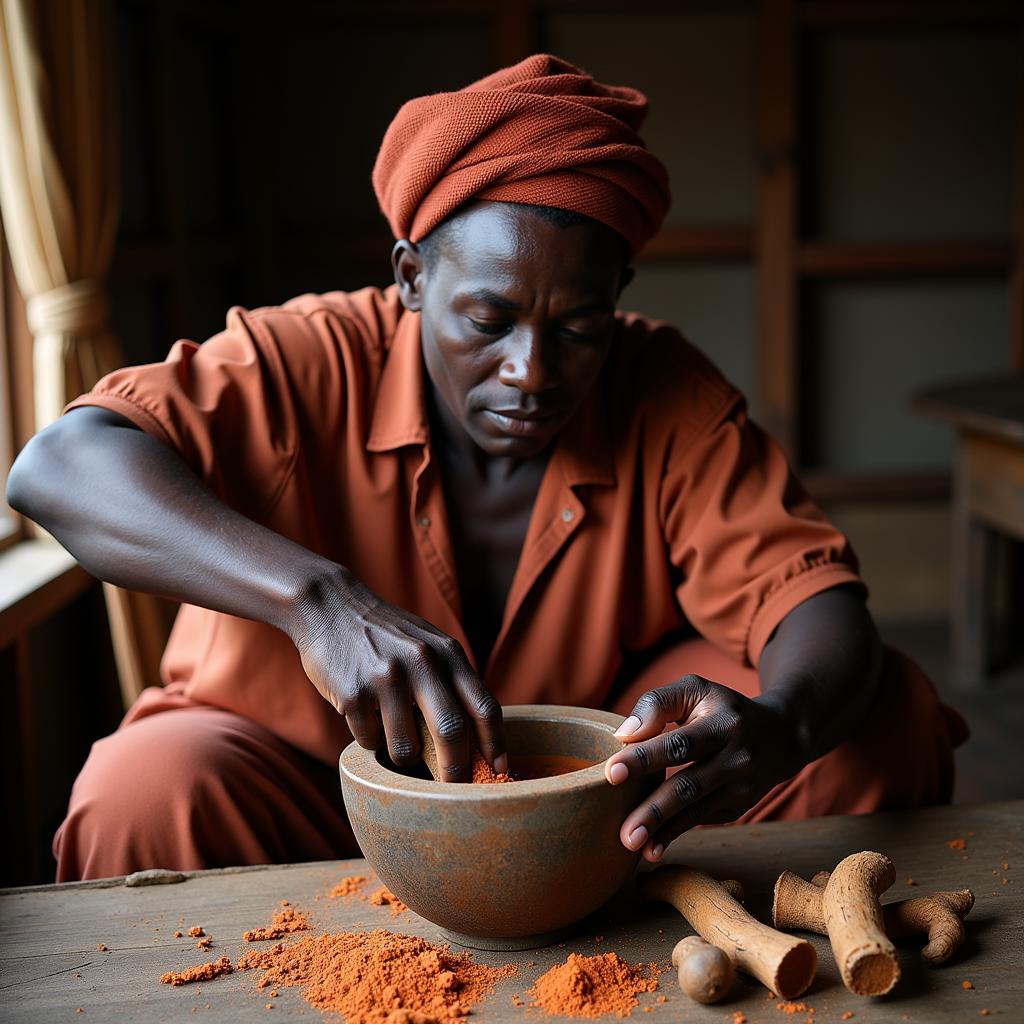The African Ant Bear: A Closer Look at the Aardvark
The African Ant Bear, more commonly known as the aardvark, is a peculiar and fascinating creature found exclusively in sub-Saharan Africa. This nocturnal mammal is easily recognizable by its pig-like snout, rabbit-like ears, and kangaroo-like tail, making it a truly unique animal with a rather misleading name. While “bear” might be in its name, the aardvark is actually the only surviving species of the order Tubulidentata, setting it apart in the animal kingdom.
Unraveling the Aardvark’s Nocturnal Lifestyle
Aardvarks are perfectly adapted to their nocturnal lifestyle. Their poor eyesight is compensated by an exceptional sense of smell and hearing, which are essential for locating their primary food sources: ants and termites. During the day, they seek refuge from the African sun in cool, underground burrows, emerging only after dark to forage. These burrows, often complex and extensive, can reach lengths of up to 13 meters (43 feet) and serve as vital shelters not only for aardvarks but also for a variety of other animals seeking protection from predators or the elements.
 Aardvark Burrow
Aardvark Burrow
The Art of Aardvark Foraging: A Sensory Symphony
When night falls, the aardvark embarks on its quest for food. Using its powerful claws, it rips open termite mounds and anthills, relying on its keen sense of smell to identify active colonies. Its long, sticky tongue, which can extend up to 30 centimeters (12 inches), comes into play next, lapping up the unsuspecting insects. This feeding method, similar to that of anteaters and pangolins, highlights a fascinating example of convergent evolution, where unrelated species develop similar traits in response to similar environmental pressures.
 Aardvark Feeding
Aardvark Feeding
Dispelling the Myths: A Gentle Giant
Despite its somewhat intimidating appearance and powerful claws, the aardvark is a docile and solitary creature. It rarely poses any threat to humans and plays a crucial role in its ecosystem. By consuming vast quantities of termites and ants, it helps to regulate their populations, preventing potential imbalances within the delicate African environment.
“Aardvarks are incredibly important for maintaining the health of their ecosystems,” explains Dr. Naomi Kitoto, a wildlife biologist specializing in African mammals. “Their feeding habits contribute significantly to soil aeration and nutrient cycling, ultimately benefitting a wide range of plant and animal life.”
The Aardvark in African Culture: Symbolism and Significance
The aardvark holds a unique place in African folklore and culture. Its digging prowess has earned it a reputation as a skilled builder and a symbol of perseverance and resourcefulness. In some cultures, the aardvark is even believed to possess supernatural powers, often associated with good luck or protection.
A Vulnerable Future: Threats to the Aardvark
While the aardvark plays a vital role in its ecosystem, it faces an uncertain future. Habitat loss due to human encroachment, such as agriculture and development, is a significant threat. Additionally, aardvarks are sometimes hunted for their meat or persecuted as agricultural pests, further endangering their populations.
 Aardvark in the Wild
Aardvark in the Wild
Conservation Efforts: Protecting a Unique Species
Recognizing the importance of preserving this unusual animal, conservation organizations are working to protect aardvarks and their habitats. Efforts include raising awareness about the species, mitigating human-wildlife conflict, and promoting sustainable land management practices.
Conclusion: The Endearing Enigma of the African Ant Bear
The African ant bear, with its peculiar appearance and fascinating lifestyle, is a testament to the incredible biodiversity of the African continent. By understanding and appreciating the crucial role it plays in its ecosystem and the cultural significance it holds, we can work towards ensuring the survival of this endearing enigma for generations to come.
FAQs about the African Ant Bear
1. What is the lifespan of an aardvark in the wild?
Aardvarks typically live for about 18 years in the wild.
2. How much does an aardvark weigh?
An adult aardvark can weigh anywhere between 40 to 65 kilograms (88 to 143 pounds).
3. Are aardvarks dangerous to humans?
Aardvarks are generally docile and shy creatures, posing little threat to humans. However, like any wild animal, they should be admired from a safe distance.
4. What is the conservation status of the aardvark?
The aardvark is currently listed as Least Concern on the IUCN Red List, but their populations are declining in some areas due to habitat loss and hunting.
5. What are some other animals found in the same habitat as aardvarks?
Aardvarks share their habitat with a variety of other animals, including lions, leopards, hyenas, elephants, and giraffes. You can learn more about the African elephant vs polar bear in another article.
Seeking More African Insights?
Interested in learning more about the diverse cultures and wildlife of Africa? Dive into our articles on African jazz female artists and the historical significance of African hieroglyphics symbols. We also have a fascinating piece exploring the complex history of white Africans.
Contact Us
For any inquiries or assistance, please don’t hesitate to reach out to our dedicated team at +255768904061 or email us at kaka.mag@gmail.com. You can also visit us at our office located in Mbarali DC Mawindi, Kangaga, Tanzania. We are available 24/7 to assist you.

